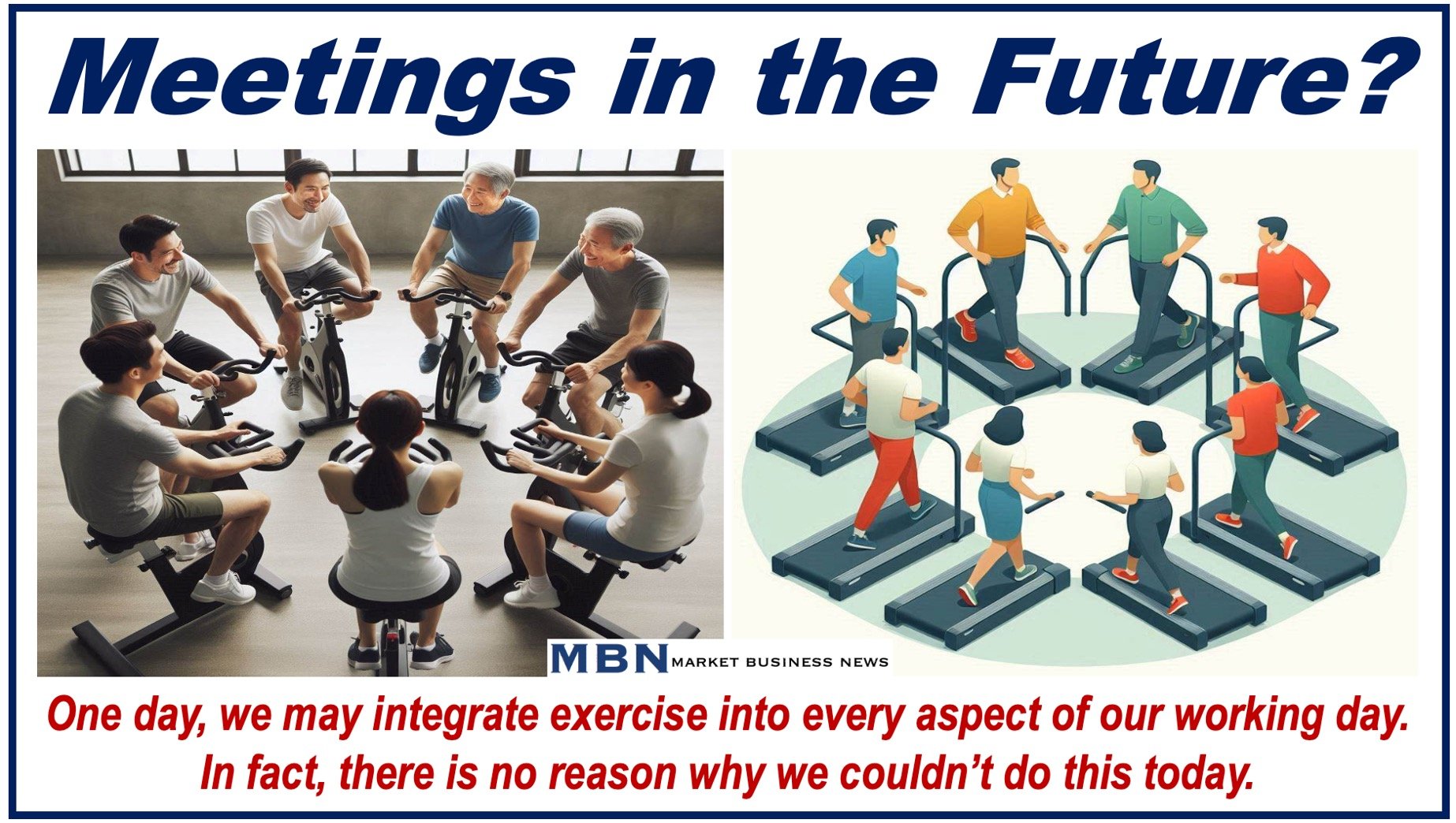Prolonged sitting, or sitting for long hours, has become a part of life for many in today’s tech-driven world, whether it is due to commuting, work, study, entertainment, or even online shopping.
However, according to recent studies, this sedentary lifestyle can seriously impact your health, even if you are a young, active individual.
The recommended twenty minutes of moderate exercise each day is not enough to counteract the adverse effects of prolonged sitting, researchers have found.
The Impact of Sitting on Health
Worrying about the effects that sitting for hours on end can have on our health is not new—we have been doing it for many years.
Eight years ago, three researchers wrote about their study on sitting in the British Journal of General Practice and titled it ‘Sitting is the New Smoking: Where Do We Stand?’ They made the following tentative prediction:
“It is likely that future generations will look back at our sedentary working practices with the same incredulity that we now regard the idea of a smoke-filled office or airplane.”
The Impact of Prolonged Sitting on Health
A recent study conducted by researchers from the University of Colorado Boulder and the University of California Riverside shows that people, particularly young adults, are spending more than 60 hours per week sitting.
Their study, which involved over 1,000 participants including twins, examined health markers like cholesterol and body mass index (BMI).
Results indicated that prolonged sitting is associated with accelerated aging and an increased risk of cardiovascular and *metabolic diseases.
* Metabolic disease is a group of conditions that disrupt normal metabolism. People who are obese, have high blood pressure, high blood sugar, high cholesterol, or lead a sedentary lifestyle are more likely to have metabolic disease.
Participants in this study were between 28 to 49 years old, with an average age of 33. They reported sitting for nearly nine hours a day on average, with some sitting as long as 16 hours.
Even though they engaged in some physical activity, their prolonged periods of sitting appeared to offset the benefits of moderate exercise.
The researchers, who wrote about their study and findings in the peer-reviewed journal PLUS ONE, found that people who sit for long hours are at higher risk of cardiovascular and metabolic diseases, even if they meet minimum exercise recommendations.

Why Moderate Exercise Alone Isn’t Enough
The study findings suggest that 20 minutes of moderate exercise per day may not be sufficient for those who spend most of their day seated.
A quick walk after work can help, but it is not enough to significantly lower the risks associated with prolonged sitting. This is especially relevant if you are a young adult and feel immune to aging and health issues.
To put it simply, if you sit all day followed by a short workout, you may still be vulnerable to the negative health effects of a sedentary lifestyle.
The best way to minimize the health risks associated with prolonged sitting is to increase vigorous activity or combine moderate exercise with reduced sitting time, the researchers suggest.
Vigorous Exercise as a Potential Solution
If you are looking for ways to combat the effects of prolonged sitting, the study suggests adding more vigorous exercise to your routine.
This could mean running, cycling, or other activities that get the heart rate up. Vigorous exercise was found to have a protective effect on cholesterol and BMI, helping participants look up to 10 years younger than their less active counterparts.
Could thirty minutes of vigorous exercise erase the negative effects of a sedentary day? Perhaps not; it may mitigate some of the detrimental health effects but not completely counter them, the authors say.
If you want to completely eliminate the negative effects of sitting for too long, you need to reduce your sitting time and add more intense exercise into your daily routine.
Senior author, Chandra Reynolds, a professor in the Department of Psychology and Neuroscience and the Institute for Behavioral Genetics, said:
“Our research suggests that sitting less throughout the day, getting more vigorous exercise, or a combination of both may be necessary to reduce the risk of premature aging in early adulthood.”
The Role of Lifestyle Choices in Health
An effective way to determine whether lifestyle, rather than genetics, impacts health is to study twins. There were twins in this study. They were identical twins; they share 100% of their genes.
If identical twins have different health outcomes, it is most likely due to lifestyle differences rather than genetic factors.
When they compared twins, the researchers found that replacing sitting with exercise produced better results in terms of cholesterol and BMI than merely adding exercise on top of sitting.
This suggests that changes in lifestyle can play a critical role in minimizing health risks associated with prolonged sitting.

Practical Tips to Reduce Sitting Time
If you spend much of your day sitting, making small changes can have an impact on your health. Here are a few practical tips:
-
Stand More at Work
Whenever possible, stand up at work. For example, when the telephone rings or a colleague asks for your opinion about something, stand up before you respond.
If possible, use a standing desk or alternate between sitting and standing throughout the day.
Taking breaks to stand, even for a few minutes every hour, can improve circulation and reduce the negative impacts of sitting.
-
Take Short Walks
You could set the alarm on your smartphone, computer, or smartwatch to remind you every hour to walk for a few minutes. Brief walks or stretches can break up long sitting periods and prevent stiffness.
You could combine horizontal walking with climbing up and down the stairs (if your workplace has stairs).
If you work at home, consider getting a stepping machine or portable stepper for that hourly break from sitting. Ask your boss whether you could bring a portable stepper if you work away from home.
-
Incorporate Walking Meetings
Instead of sitting in a conference room or at your desk, try having a meeting on the move. Walking meetings can increase both physical activity and mental alertness.
-
Add Vigorous Exercise
Aim for at least 30 minutes of vigorous exercise several times a week. Running, cycling, or high-intensity workouts can provide more health benefits than low-intensity activities.
Gyms today have a variety of machines, such as treadmills, rowing machines, stationary bikes, elliptical machines, and stair climbers, which are effective ways to increase your heart rate quickly and boost stamina and endurance.
Another option is to get one of these high-intensity machines for your home.
-
Be a “Weekend Warrior”
If daily workouts aren’t possible, try to engage in longer sessions of vigorous activity on the weekends. Studies show that “weekend warriors” can still benefit from exercise, even if it’s not daily.

The following quote comes from one of our articles about the benefits of being a weekend warrior:
“A recent study offers hope for those who concentrate their physical activity over 1-2 days, often referred to as “weekend warriors.” This pattern of exercise appears to provide similar cardiovascular benefits to those who exercise more consistently throughout the week.”
-
Fidget While Sitting
Did you know that fidgeting can help reduce some of the negative effects of prolonged sitting?
Small movements, like tapping your feet or shifting your position, can also increase circulation and help reduce the effects of being sedentary.
Revisiting Physical Activity Guidelines
These latest findings underscore the importance of revising physical activity guidelines to better address the health risks of prolonged sitting.
The current recommendation of 150 minutes of moderate exercise per week may not be enough for those who sit for long periods.
Health experts are calling for guidelines that address both sitting time and physical activity intensity.
By reducing sitting time and incorporating more vigorous exercise, you can protect yourself against premature aging and the onset of cardiovascular and metabolic diseases.
This combination of movement and high-intensity exercise could serve as a preventative measure, benefiting health both in the short and long term.
Final Thoughts
In a world where technology often keeps us glued to our seats, it’s essential to stay mindful of the health risks associated with prolonged sitting.
Young adults, in particular, should start building healthier habits now to avoid facing health issues later in life.
Simple adjustments can make a meaningful difference. Examples include:
- Standing more.
- Taking breaks to move.
- Adding vigorous exercise.
- Taking the stairs instead of the elevator.
- Walking during phone calls.
- Doing short bodyweight workout.
By taking proactive steps today, you can reduce the risk of premature aging and safeguard your health for the future.
Remember, our bodies were designed to move. Embracing a more active lifestyle may be the key to healthier aging and improved well-being overall.
